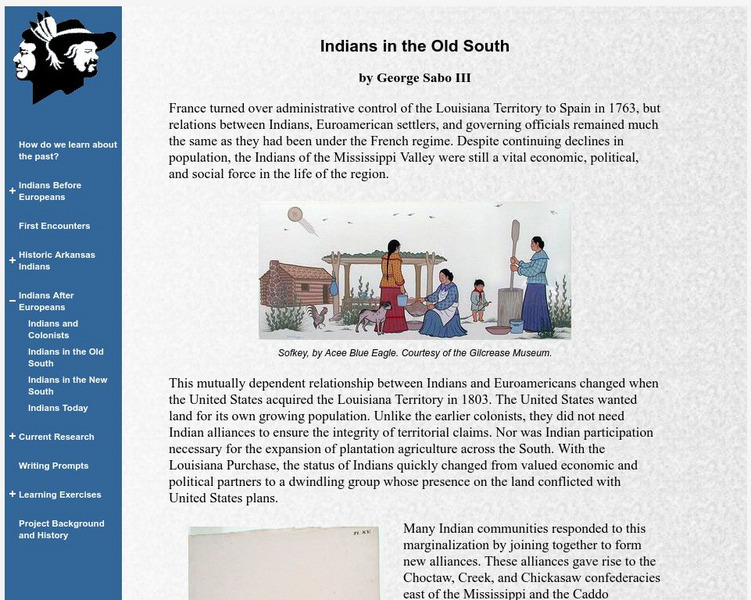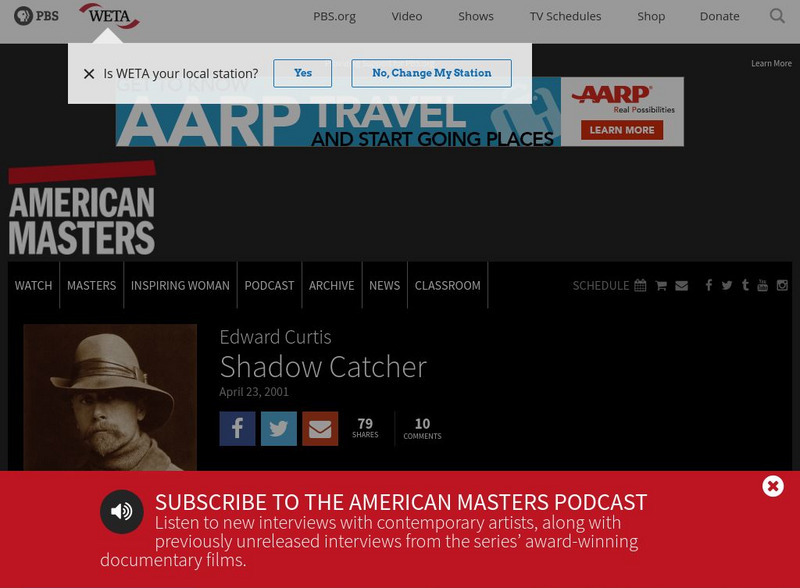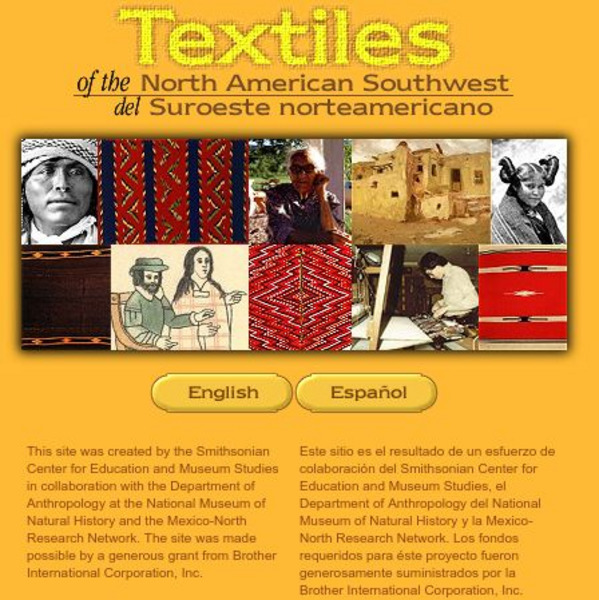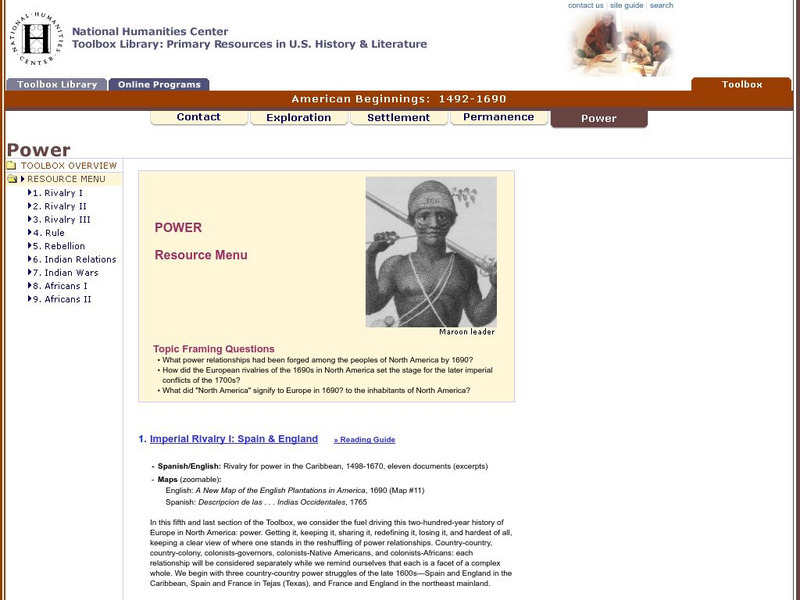Hi, what do you want to do?
A&E Television
History.com: Native Americans Weren't Guaranteed the Right to Vote in Every State Until 1962
Native people won citizenship in 1924, but the struggle for voting rights stretched on much longer. Native Americans couldn't be U.S. citizens when the country ratified its Constitution in 1788, and wouldn't win the right to be for 136...
Smithsonian Institution
National Museum of the American Indian: Song for the Horse Nation
An exhibition about horses in Native American cultures takes a sweeping look at the ways in which Native peoples, past and present, regard horses and horsemanship. Learn how the horse transformed Native approaches to the hunt, warfare,...
Wikimedia
Wikipedia: Mohawk People
Wikipedia offers geographical and historical information on the Mohawk Nation, a tribe of Native American people.
A&E Television
History.com: The Native American Chief Who Drove Out Spanish Colonists and Nearly Expelled the English
In the summer of 1561, Spanish explorers abducted Opechancanough, a Powhatan Indian youth from the Chesapeake Bay tidewater region and brought him to the royal court of Spain. The kidnapping set off a chain of events that would alter the...
Other
Snowwowl: Native American Shields
In many tribes, young males went on a Vision Quest to obtain a "spiritual name" or to find a "Spiritual Guide". At the end of the quest a gift was take to the tribe's Holy Man or Medicine Man. View examples of shields from various Native...
Other
Native Peoples of North America: Agricultural Societies in Pre European Times
A good introduction to the three major Native American cultures in the Southwest prior to European contact. Find information about the Mogollon, Anasazi, and Hohokam cultures. Read how they influenced each other, and what was unique...
Rutherford B. Hayes Presidential Library & Museum
United States Indian Policy During the Late 19th Century: Change and Continuity
By the 1890's, the status of Indian people seemed to validate Frederick Jackson Turner's claim that "the frontier has gone, and with its going has closed the first period of American history." Natives ceased to threaten the Republic...
Other
Cabrillo College: An Introduction to California's Native People: Missionization
This site discusses the mission movement in California and its effect on the Native Americans. Timeline of the missions' founding is also provided.
National Endowment for the Humanities
Neh: Edsit Ement: Anishinabe Ojibwe Chippewa: Culture
Though written for grades 3-5, this lesson plan can be easily changed to help students of all ages learn about the Chippewa people. Additional resources provide historical, cultural, and geographical facts concerning this Native American...
PBS
Pbs: Chief Joseph
This PBS-People in the West site provides an excellent biography of the great Native American leader, Chief Joseph. The site includes a photo and his famous surrender speech.
Other
Arkansas Archeological Survey: Indians of Arkansas Indians in the Old South
After the Louisiana Purchase, the status of the Native Americans changed from partners to a declining group whose presence conflicted with United States plans. Follow the events which changed and reshaped the lives of these Native peoples.
PBS
Pbs: American Masters Edward Curtis
Comprehensive site about Edward Curtis who took over 40,000 images and recorded rare ethnographic information from over eighty American Indian tribal groups, ranging from the Eskimo or Inuit people of the far north to the Hopi people of...
American University
American University: Ted Case Studies: Hudson Bay Company Fur Trading in 1800s
This site gives an overview of the fur trade with Northwest Coast native peoples in the 1800s, and the impact the fur trade and contact with outsiders had on the natives' way of life.
PBS
Pbs:the Living Edens/manu Native People of Manu
An article on the Machiguenga, the native people of the Manu rainforest in Peru. This article talks about their culture, history, and their use of plants and animals.
Smithsonian Institution
Smithsonian: Textiles of the North American Southwest
This site explores the weaving traditions of the Native American and Hispanic peoples of northern Mexico and the southwestern United States. A gallery of artifacts, timeline, map glossary, and textual descriptions are included. This is a...
PBS
Mpr: The Meaning of Sioux Music and Song
This site from the Minnesota Public Radio provides the text of a 1915 article written by musician and self-trained anthropologist, Frances Densmore. Densmore spent years studying the music and culture of the Teton Sioux and other native...
National Humanities Center
National Humanities Center: Toolbox Library: Indian Relations, American Beginnings: 1492 1690
One modern historical assessment and several original accounts of the mistrust, negotiations, alliances, trading, and disease transmission between European colonizers and native peoples in North America.
National Humanities Center
National Humanities Center: Toolbox Library: Contact, American Beginnings: 1492 1690
Thirty one primary sources including historical documents, literary texts, and visual images from which to explore European reactions to the land and the people of the New World and the Natives' responses to European contact and conquest.
National Humanities Center
National Humanities Center: Toolbox Library: New World: Part I: American Beginnings: 1492 1690
A variety of paintings and drawings that display European images of their first encounters with the land, plants, animals, and native peoples of the western hemisphere. With questions for discussion.
National Humanities Center
National Humanities Center: Toolbox Library: Missions, American Beginnings: 1492 1690
A Spanish Franciscan and a French Jesuit report on the reciprocal relationship between natives and Catholic missionaries as Europeans settled New France and New Spain.
National Humanities Center
National Humanities Center: Toolbox Library: Power, American Beginnings: 1492 1690
Fifty seven primary sources-historical documents, literary texts, and visual images-and one secondary historical account that explore imperial conflict, European economic rivalry, and the impact of colonial rule on native peoples.
Northern Arizona University
People and Land Use on the Colorado Plateau
Description of the people that have lived in the Colorado Plateau over the past 12,000 years. It started with the Paleoindians and has included such people as the Archaic culture, Anasazi, Hopi, Zuni, Pais cultures, and Navajos among...
Curated OER
National Park Service: Ellis Island: Oyster Island
Before Ellis Island was an immigrant processing center, it was visited by Algonquin peoples to harvest the oyster beds, hence the name 'Oyster Island' which was given to it by the Dutch. Two other islands in the same area were also...
PBS
Pbs New Perspectives on the West: Pope
This site contains information about the religious leader from San Juan Pueblo, in present-day New Mexico. Pope organized and led the most successful Indian uprising in the history of the American West. He created the conditions for a...
























